Small rural towns in the American West have a talent for incubating distinct personalities whom city folk call “local characters” or “colorful individuals” while town members express their appreciation with grins and tales of exploits and recognition. Blanding, a town located in southeastern Utah, is no exception, sporting a full complement of citizens who could keep the world entertained with stories about experience and individual qualities. But these stories are more than entertainment; they are a chronicle of history, a reaffirmation of values, a badge of belonging, a point of pride—it is “us”—a part of who “we” are in a community comprised of unique souls. Wrapped into those tales and biographical sketches are folklore, lessons for life, psychological understanding, and values to treasure—often shared with humor and local color.
This book is by and about another one of those personalities, a man named Fin Bayles, who spent most of his life in Blanding. I met Finley Harris Bayles (1931-2006) in 1976 when I moved to Blanding, located in the Four Corners area of the Colorado Plateau. It didn’t take long in this small Mormon community for me to strike up an acquaintance with him and become mesmerized with his down-to-earth, salty character. He belonged to the fourth generation of Bayleses who had explored, then settled, the San Juan country, starting with the Hole-in-the-Rock expedition in 1879. Each generation pursued the livestock industry as a means of livelihood; Fin exemplified this heritage.
There were a few things about the man that drew me to him instantly—not his six-foot-two height, wavy gray-white hair, or penetrating glance focused through horn-rimmed glasses, but his words. As soon as he spoke, people listened. He ha a facility with language, combining words and phrases in an amusing fashion while choosing some that brought surprise when they fit in the conversation. Listeners grinned, clung to his speech in anticipation, and hoped for more. Whether delivering a sermon on the “integrity” of Dutch oven potatoes, analyzing a situation or personality, or expressing concern for a loved one, he would cut to the core with terms that may not have been genteel but were highly accurate.
Here is an Excerpt from Chapter 5 of the book: “Horses, Hinnies, Jennies, and Mules”
A cowboy and his horse are inseparable. Certainly there is the pragmatic side, where together they work to support each other. Examples from this chapter—whether looking at horses that automatically perform tasks that assist, the “psychic mule” that knows more than its master, or the pure financial investment of raising desirable stock—show that there is no missing the value that accrues to this working combination. In the old days, people respected, prized, and paid attention to their mounts, selecting favorites for special attention. As Fin points out, his dad, Grant, had “the ability to recognize [a horse] on a range two hundred miles away, five years later,” and was given high honor for this skill.
But there was more to “horsin’ around” than just the utilitarian relationship. The bond between animal and man was one of admiration and a type of kinship. Whether it was a horse, hinny, jenny, or mule, there seemed to be a reciprocal affection that came about only between those that had shared hard times and difficult problems during daily struggles on the range.
Bob McPherson
FROM FIN BAYLES:
My dad never told me many stories. Maybe that is one of the things which has motivated me to leave some of my experiences, in case some of my outfit might someday want to know them. His attitude toward me was maybe a little bit dogmatic. I was his kid, therefore, I should think like him, be interested in the same things he was, and have talents and abilities compatible with his. I think this is the reason he did not tell me much–I simply was supposed to know it. On those occasions that he did tell me things, it was generally very interesting and enjoyable. Here are some of the experiences which he shared.
In the early days of this country, range rights were settled peacefully by mutual agreement of the parties involved. His family was interested in the sheep business as well as cattle. Dad told me about a little rock house way down Alkali Canyon south of Mustang Mesa. I made a point of going there just to see it. By then the roof was gone and it was beginning to fall down. That was the place where this experience occurred. After he had been there a few weeks, contrary to the grazing arrangements that everybody was abiding by, a Colorado man brought a bunch of broomtail horses in on that range, located them on the local water, and stayed a day or two then left. This was against the established policy and dishonest, but he was wild and tough and probably prepared to fight. Besides, Dad was just a kid and wasn’t taken seriously even if he had said something. This guy would return every few days for a short time to check on his horses. He and Dad spoke to each other occasionally and became slightly acquainted. As long as Dad was willing to be friendly with him, he was friendly with dad, with no evidence of bad feelings on either side.
However, on one of Dad’s trips checking horses, he found one dead. He didn’t seem too concerned, after all horses occasionally die like anything else. The next time he showed up he found two or three more dead ones. Sometimes he would have to hunt hard to find them, but there were more dead horses in some remote sections of the range. By about February, six or eight of his forty horses had mysteriously died. Dad remained friendly and helpful, but he couldn’t resolve the dead horse mystery. It was totally strange—he was really puzzled why the horses were just lying down and dying. Fearful that he was going to lose his whole herd, he rounded them up and drove them out of the country. Dad was never one to participate in any kind of revenge, but he believed this man was killing his horses. Eventually the intruder left the country.
Horses and mules got named everything. If my dad had a mare that he traded into, he would name it after the wife of the guy he got it from. We had one horse named Spook, a title that summarized his character. Dad’s horse Rusty was feisty and was also called “Crow Crap” because he was a roan and spotted. There was a big, stout black and white mare he named Magpie that for four years straight threw big, fine, colts, but every one of them was a buckskin pinto. She was a black and white pinto and the stud was white but all of the colts came out yellow with white spots. The four were named Cisco, Pedro, Pancho, and the last one that was not too smart—Dough Head. Another horse was called Prosperity because the army bought it for $200—a top price for an animal at that time, when a good horse would usually be bought for $40 or $50. Dad had arrived late at a sale in Dove Creek, where army officers with smoky bear hats and fluffy pants were walking around buying horses. They were good looking soldiers in their big shiny brown boots that came clear to their knees, but they had been working hard and were worn out. I don’t know how many horses were there, but there were a lot. The officers seemed rushed and told dad to pick the horse’s feet up, so he picked all four feet up one at a time from one side. The soldier purchasing the horses liked that. It really appealed to him that the animal would lift his foot and put it in your hand. Dad also had a cracker-jack horse named Hitler, a Belgian draft horse, and one called Ike and another Monty for Eisenhower and Montgomery.
I really loved my grey horse named Spud. One spring, when I was about fourteen, I helped take the cattle to the mountain, where we had a catch fence for about a mile that joined in with the cliff rim near Johnson Creek. We often held the cattle there overnight before pushing them through Brushy Basin to the ranch. I was feeling good because I had helped the men drive the cows up the mountain and had worked hard. I tied Spud to a tree with all the other horses, gave him a flake of hay, and left him for the night. When I got up the next morning, I found that he had just laid down and died. Dad told me to go back to the pickup and not to worry about one old horse. Apparently, Spud was not a spring chicken. Everyone was saddling up with the aid of the pickup lights, but I felt so doggone bad that Spud had died, I went over and stood on his rib cage. I don’t know why but I was just standing on him feeling blue. All of a sudden, Spud picked up his head and looked at me. He had just been asleep, really sound asleep! Through all of that commotion–with everyone walking around, the pickup running, the lights shining and me jumping and walking the length of him—he finally raised his head and looked at me. I got down and let old Spud up then saddled him and went to the ranch. I never saw a horse act like that. Most horses sleep standing up or lying down with their head up, but he was laid clear out.
Once, a trader from Tucson came to Blanding. Traders were a breed unto themselves. They would take four big teams of horses and tie them together, then hook three great big wagons behind and take them over bad roads and canyons. When they came through town, it was a special moment. A crowd would come out to see them, learn where they were going, and what they had to sell. There was a certain place in town where they tied up and fed their horses and people would come to buy their freight. One fellow had a great big horse and when the people got together, he would set up bets on whose team could out-pull the others. People bet either their horses or money like $20 or $50 then they hitched the horses to a sled with some kind of weight, maybe a big heavy rock that weighed from two to four tons. If the team could move the rock a foot, it was considered a pull. A lot of horses were lost in these bets; some men brought in their bad mounts, hoping to finish with a better one. This particular trader had a big old horse that he set up for pulls. He let other people’s horses work up to the biggest pull, then his horse pulled one load better. He would take his big horse and hook him onto the load, then pick up one big foot and place it where he wanted it and do this with all four of the hoofs, then when he was ready, he’d tell the horse to go and it would just lean into the harness. The animal never lifted a foot; there was no stomping around, just leaning into the collar and that would pull the sled a foot! The old timers groaned. They claimed the horse never took a step but the trader explained that wasn’t part of the deal. He had the old horse trained so that by having all four feet on the ground with just the right angle and exertion in straining forward, he could pull that load and win the bet.
Horse shoeing is a chore and requires technique. If you have a decent horse, it is not too bad, but horses can get spoiled. When you pick up a foot and work on it with a rasp, the horse might go to sleep and start to lean a little heavier and a little heavier on you. It is hard to hold up a quarter of a horse. After an animal has been shod a few times, it generally gets better. This is part of breaking a colt. You need to pick up his feet and mess with his legs then hold up his foot, slap him on the inside of his legs, rub his belly, and whatever else you can think of until he gets feeling good about it.
Most men start on the left front foot and then the right. Some will shoe a front and then a back leg, since people have different techniques for going around a horse. But it is much easier to shoe a front foot than it is a hind foot and the horse feels the same way about it. The person doing the shoeing picks up the first leg and goes to work on leveling the foot and shaping the shoe. When you get it to fit like you want, you nail it on. A person can really damage a horse by nailing the shoe on wrong. The foot has to be nice and flat with the nails coming out in the hard part of the hoof. If you are not careful and drive a nail into the wrong part, it will cripple him, become sore, and possibly get the foot infected. Dad always bent the end of the nail with his mouth to steer the nail outward. As soon as the nail comes out, a small notch is filed below the nail in the hoof so that the nail can be bent down and not crack the hoof. Then the nail is cut off. Shoeing has a technique and there are not many people who know how to do it anymore. In the past, everybody knew how to shoe horses. I started shoeing when I was sixteen years old, but I never liked it. An old cowboy’s horse would throw a shoe and go down the trail and his owner would find a shoe that another horse had thrown, pick it up, reshape it a little and tack it on. I think it was Butch Cassidy and some of the other old timers who shoed their horses on the trail rather than risk them getting a sore foot. The Indians were amazed that horses had iron on their feet. They didn’t understand it, but they realized a horse can go a lot farther if he doesn’t get sore feet. Indians were pretty enthusiastic about doing it and became good shoers.
A COWBOY’S TOUGHEST DAY
The sun was bright, the sky was blue, the world it felt like spring
With nature’s new a-bustin’ loose, the songbirds high a-wing.
I took a ride to distant range just to have a look,
Ridin’ a big hay-burner, a bay Steel Dust named “Spook.”
The horse was fresh and frisky and not because I should,
I slacked the reins, gave him his head to run, ’cause he felt good.
He took a bank, both up and down, some room to run he’d seek,
He was raisin’ sparks off cobblestones runnin’ down that creek.
He stretched his shanks about a mile, then kinda settled down,
He flew across a sandbar he thought was solid ground.
He felt the sand a shakin’ and spun around to leave,
And ‘fore he got back on that bar, was in way past his knees.
I bailed off and lit face down and then commenced to roll,
I supposed that sand had bottom, but it might just be a hole.
I shed my chaps and boots and spurs and in an awful rush,
I started huntin’ posts or poles or even scrub oak brush.
I gathered up a bunch of float to use for what I planned,
Couldn’t get it ‘neath ole Spook, he was belly deep in sand.
I dropped a pole ‘aside of him and passin’ by his nose,
I grabbed ahold my saddle and cut both latigos.
I fetched my kack and navie pads back upon dry land,
Then I turned to save my horse from that sinkin’ sand.
I stuck a pole ‘aneath his jaw and went to look for more,
‘Afore I found a decent one, old Spook was near done for.
I hadn’t brought my thirty, and I couldn’t use my rope,
I didn’t have no guts to use my knife to cut his throat.
But in a saddle pocket was somethin’ way past new,
Showin’ rust and sheddin’ chrome, a single-action thirty two.
I popped the catch and broke her back to check the chamber fills,
I rolled ’em over in my hands, five brass and leaden pills.
Old Spook had stopped a fightin’; his settlin’ now was slow,
His head was still above the mud, his jaw was on the pole.
A worm was eatin ‘in my guts, fear was in the pony’s eyes.
It was time we both admitted that Spook was going to die.
The day it was draggin’ on, this day of bitter pain,
I put the bullet in his ear and busted old Spook’s brain.
His breath, it came a-gaspin’ out, he never groaned or called,
A horse was buried ‘fore he died and a cowboy sat and bawled.
The old world ain’t so rotten; some’s dealt a harder course,
But the toughest day a cowboy has, is when he shoots his horse.
Bob Mcpherson is Full Professor of History at Utah State University, Blanding Campus. He has published extensively about the Four Corners area, especially its history and cultures, specializing in southeastern Utah and its Native American populations. His other works concerning this region and its people include Fighting in Canyon Country: Native American Conflict, 500 AD to the 1920s (Dog Ear Publishing); Comb Ridge and Its People: The Ethnohistory of a Rock (Utah State University Press); and Life in a Corner: Cultural Episodes in Southeastern Utah, 1880-1950 as well as Mapping the Four Corners: Narrating the Hayden Survey of 1875 (both by University of Oklahoma Press.) Click Here to find “Cowboying in Canyon Country” on Amazon.
To comment, scroll to the bottom of the page.
Don’t forget the Zephyr ads! All links are hot!

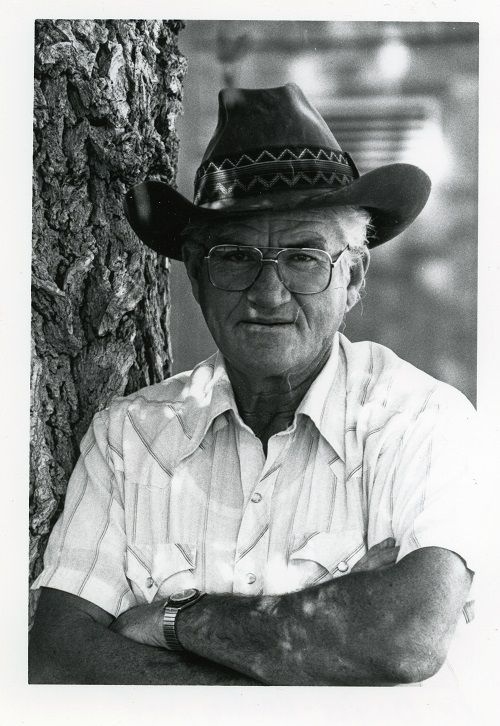
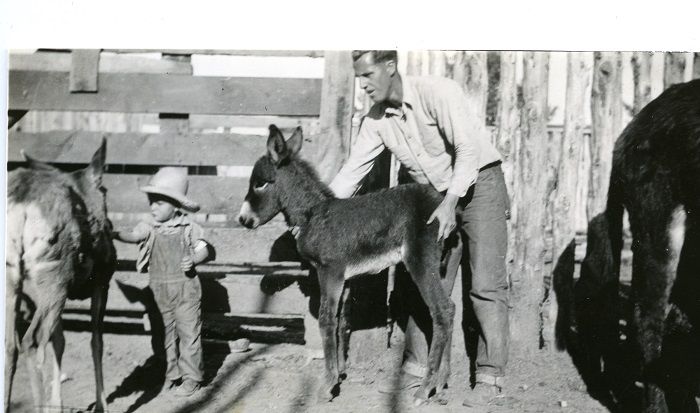
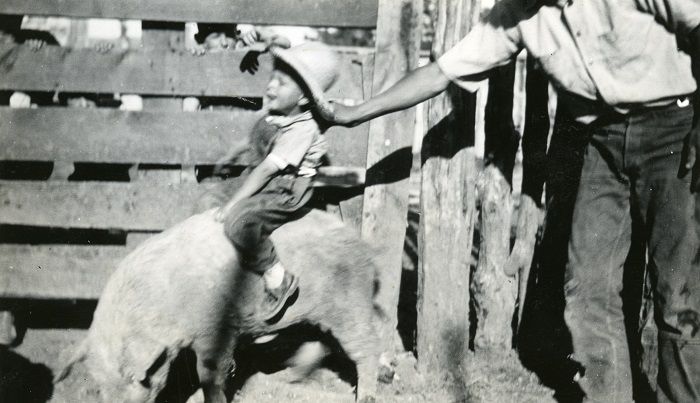
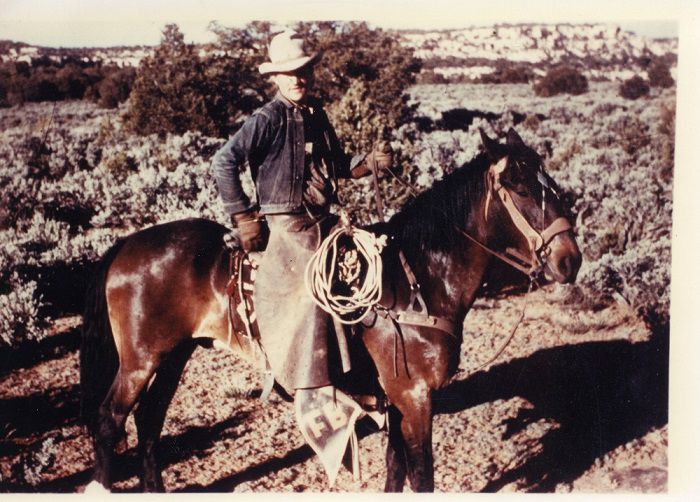

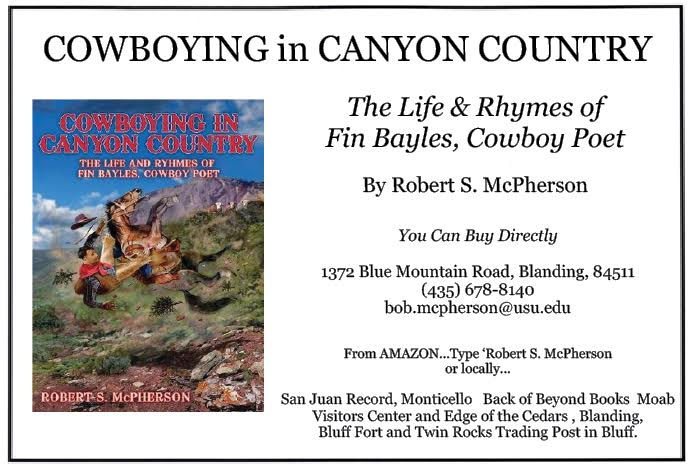
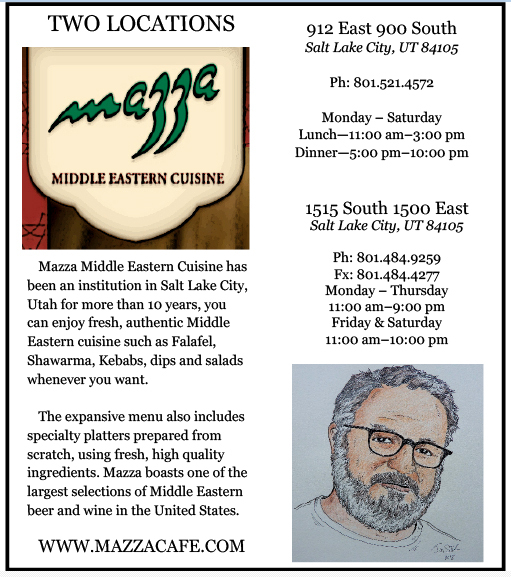
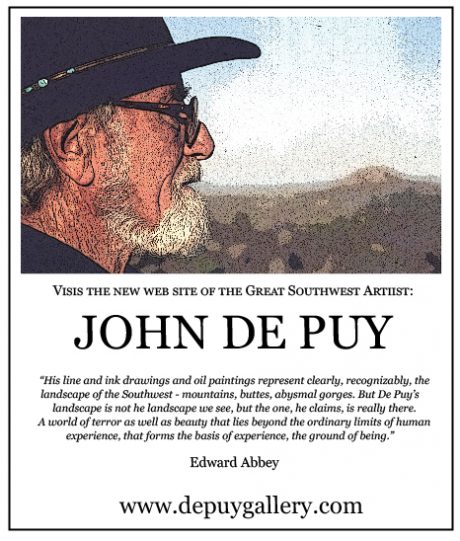
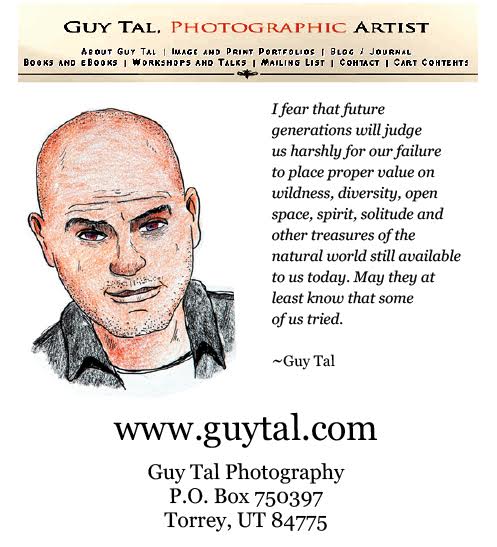



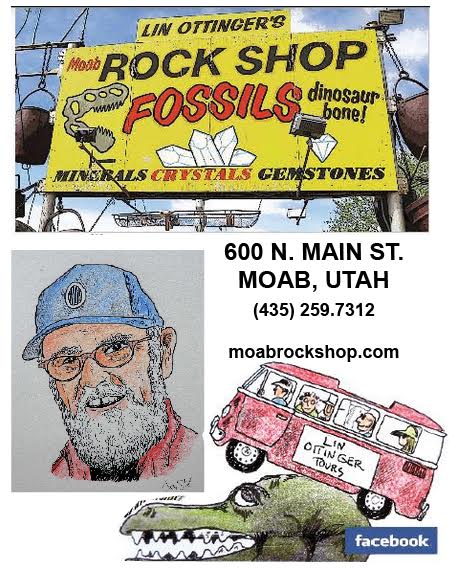

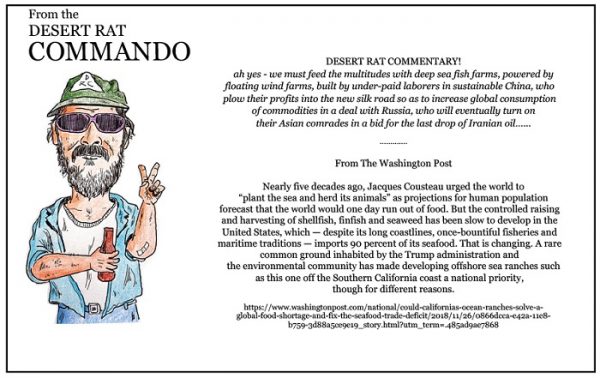
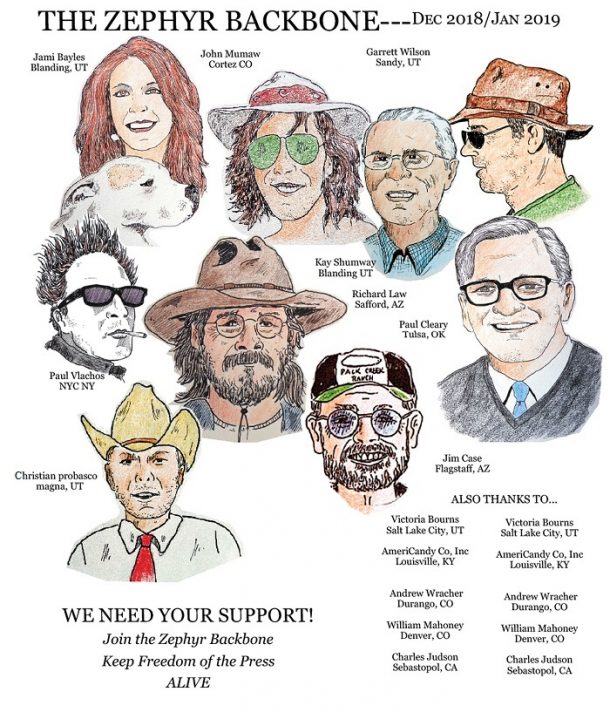
If you don’t tear up just a bit after reading “A Cowboy’s Toughest Day,” you have no soul.